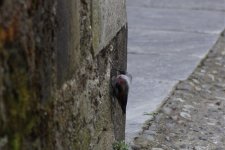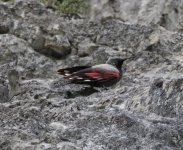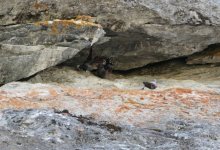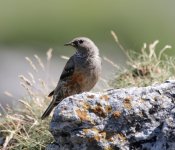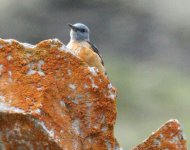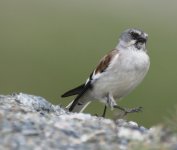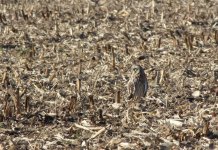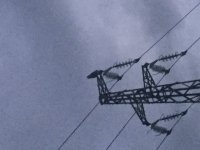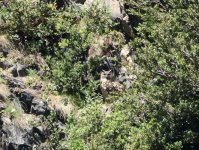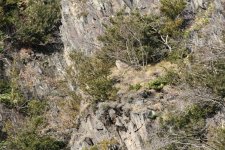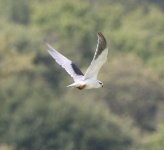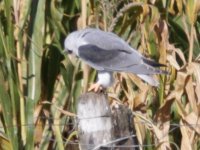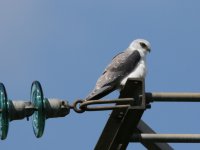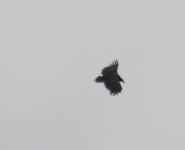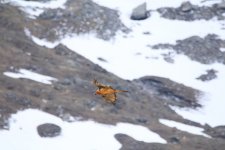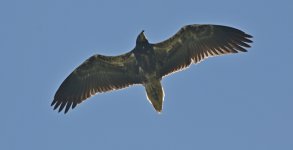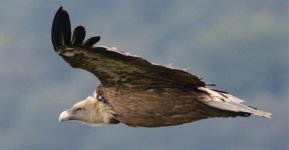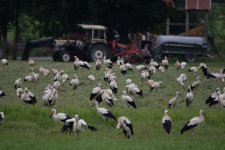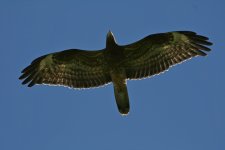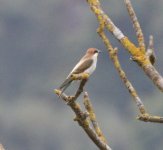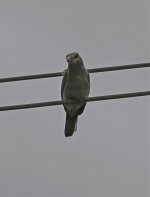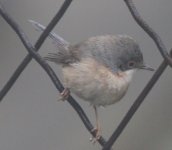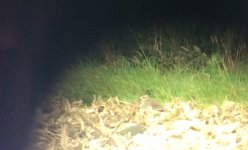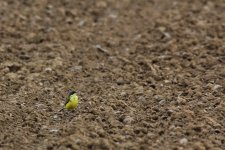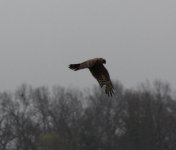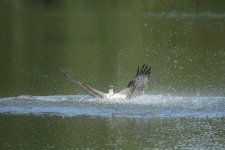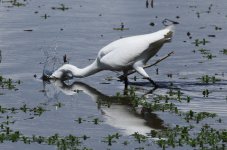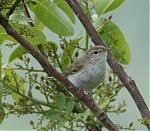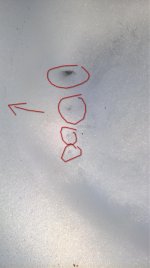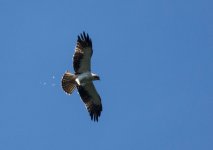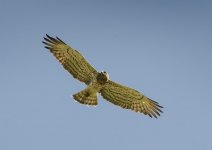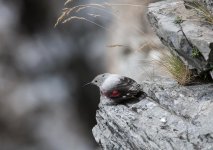rosbifs
PutAin STOP

So now 15 years (1st May 2005) in the Pyrenees - Luz St Saveur
The birding area generally stretches as far as Pau to the west, Gavarnie to the South, Lannemezan to the East and Vic to the North - 1 hour in each direction. Although Lesser Scaup a little further.
Only really a handful of twitches - Lesser Scaup already mentioned, White Rumped and Pectoral Sandpipers, Sociable Plover - the rest are 'unremarkable' local birds, only kidding some are awesome!
220 Species
28 raptors (excluding Owls)! The 29th being a sub species Brookei
The list is in bird order.... No guarantees as to names (I still call Zitter a Fan-tailed Warbler and the vulture Black) or to the actual count - it doesn't count Muscovy I don't think - it was a different colour on the list.
Highlights
Both Pallid Harriers, Eagle Owl chicks, Eleanoras Falcons, Lammergeier dropping bones and one first flight, Wallcreeper feeding chicks, White Backed Woody feeding chicks, first Red Foot, finding 13 Lesser Kestrels that long stayed, finding Scops Owl and nest (was easy as could see from the kitchen window) - OMG the memories are infinite, well too many to list bu the birds are>
220 Species observed
Graylag Goose
Canada Goose
Mute Swan
Common Shelduck
Muscovy Duck (Domestic type)
Mandarin Duck
Garganey
Northern Shoveler
Gadwall
Eurasian Wigeon
Mallard
Northern Pintail
Green-winged Teal (Eurasian)
Red-crested Pochard
Number observed: X Details: wintering bird argeles
Common Pochard
Ferruginous Duck
Number observed: X Details: ayguelongue
Tufted Duck
Greater Scaup
Lesser Scaup
Number observed: 1 Details: besingrand - over wintered
Common Quail
Red-legged Partridge
Ring-necked Pheasant
Gray Partridge
Western Capercaillie
Little Grebe
Great Crested Grebe
Rock Pigeon (Wild type)
Stock Dove
Common Wood-Pigeon (White-necked)
European Turtle-Dove
Eurasian Collared-Dove
Common Cuckoo
Eurasian Nightjar
Alpine Swift
Common Swift
Corn Crake
Eurasian Moorhen
Eurasian Coot
Common Crane
Eurasian Thick-knee
Black-winged Stilt
European Golden-Plover
Northern Lapwing
Sociable Lapwing
Number observed: 1 Details: Pau - accepted record
Common Ringed Plover
Little Ringed Plover
Whimbrel
Eurasian Curlew
Ruddy Turnstone
Ruff
Curlew Sandpiper
Temminck's Stint
Dunlin
Little Stint
White-rumped Sandpiper
Number observed: 1 Details: lac ayguelongue
Pectoral Sandpiper
Number observed: 1 Details: ayguelongue
Common Snipe
Common Sandpiper
Green Sandpiper
Common Greenshank
Wood Sandpiper
Common Redshank
Black-headed Gull
Yellow-legged Gull
Lesser Black-backed Gull
Black Tern
Whiskered Tern
Common Tern
Black Stork
White Stork
Great Cormorant (Eurasian)
Gray Heron
Purple Heron
Great Egret
Little Egret
Cattle Egret
Squacco Heron
Black-crowned Night-Heron
Osprey
Black-winged Kite
Bearded Vulture
Egyptian Vulture
European Honey-buzzard
Cinereous Vulture
Eurasian Griffon
Short-toed Snake-Eagle
Lesser Spotted Eagle
Number observed: 2 Details: Seen twice migration - one pibeste (not accepted) one Soulor (accepted)
Booted Eagle
Golden Eagle
Bonelli's Eagle
Number observed: 1 Details: not accepted by local comittee but photos identified by experts on birdforum
Eurasian Marsh-Harrier
Hen Harrier
Pallid Harrier
Number observed: 2 Details: seen twice - one that stayed winter tarbes Pau and one adult on migration pibeste
Montagu's Harrier
Eurasian Sparrowhawk
Northern Goshawk
Red Kite
Black Kite
Common Buzzard
Eurasian Scops-Owl
Eurasian Eagle-Owl
Tawny Owl
Long-eared Owl
Short-eared Owl
Boreal Owl
Eurasian Hoopoe
Common Kingfisher (Common)
European Bee-eater
European Roller
Eurasian Wryneck
Middle Spotted Woodpecker
White-backed Woodpecker
Great Spotted Woodpecker
Lesser Spotted Woodpecker
Eurasian Green Woodpecker
Iberian Green Woodpecker
Black Woodpecker
Lesser Kestrel
Number observed: X Details: 13 argeles - 3 weeks, one found dead Luz
Eurasian Kestrel
Red-footed Falcon
Eleonora's Falcon
Number observed: X Details: one Luz, one soulor
Merlin
Eurasian Hobby
Peregrine Falcon
Peregrine Falcon (Mediterranean)
Number observed: 1 Details: once argeles - brokei
Eurasian Golden Oriole
Red-backed Shrike
Great Gray Shrike
Woodchat Shrike
Eurasian Jay
Eurasian Magpie
Red-billed Chough
Yellow-billed Chough
Eurasian Jackdaw
Carrion Crow
Common Raven
Coal Tit
Crested Tit
Marsh Tit
Eurasian Blue Tit
Great Tit
Wood Lark
Eurasian Skylark
Crested Lark
Zitting Cisticola
Melodious Warbler
Sedge Warbler
Eurasian Reed Warbler
Common Grasshopper-Warbler
Eurasian Crag-Martin
Barn Swallow
Common House-Martin
Wood Warbler
Western Bonelli's Warbler
Willow Warbler
Common Chiffchaff
Cetti's Warbler
Long-tailed Tit
Eurasian Blackcap
Garden Warbler
Subalpine Warbler
Number observed: 2 Details: adult male holding territory Jer, one female Luz - in garden!
Sardinian Warbler
Greater Whitethroat
Dartford Warbler
Red-billed Leiothrix
Goldcrest
Common Firecrest
Wallcreeper
Eurasian Nuthatch
Eurasian Treecreeper
Short-toed Treecreeper
Eurasian Wren
White-throated Dipper
European Starling
Mistle Thrush
Song Thrush
Redwing
Eurasian Blackbird
Fieldfare
Ring Ouzel
Spotted Flycatcher
European Robin
Common Nightingale
Bluethroat
European Pied Flycatcher
Common Redstart
Black Redstart
Rufous-tailed Rock-Thrush
Whinchat
European Stonechat
Northern Wheatear
Alpine Accentor
Dunnock
House Sparrow
Eurasian Tree Sparrow
Rock Sparrow
White-winged Snowfinch
Gray Wagtail
Western Yellow Wagtail
Western Yellow Wagtail (thunbergi)
White Wagtail
White Wagtail (British)
Richard's Pipit
Tawny Pipit
Meadow Pipit
Tree Pipit
Water Pipit
Common Chaffinch
Brambling
Hawfinch
Eurasian Bullfinch
European Greenfinch
Eurasian Linnet
Red Crossbill
European Goldfinch
Citril Finch
European Serin
Eurasian Siskin
Corn Bunting
Rock Bunting
Cirl Bunting
Yellowhammer
Ortolan Bunting
Reed Bunting
The birding area generally stretches as far as Pau to the west, Gavarnie to the South, Lannemezan to the East and Vic to the North - 1 hour in each direction. Although Lesser Scaup a little further.
Only really a handful of twitches - Lesser Scaup already mentioned, White Rumped and Pectoral Sandpipers, Sociable Plover - the rest are 'unremarkable' local birds, only kidding some are awesome!
220 Species
28 raptors (excluding Owls)! The 29th being a sub species Brookei
The list is in bird order.... No guarantees as to names (I still call Zitter a Fan-tailed Warbler and the vulture Black) or to the actual count - it doesn't count Muscovy I don't think - it was a different colour on the list.
Highlights
Both Pallid Harriers, Eagle Owl chicks, Eleanoras Falcons, Lammergeier dropping bones and one first flight, Wallcreeper feeding chicks, White Backed Woody feeding chicks, first Red Foot, finding 13 Lesser Kestrels that long stayed, finding Scops Owl and nest (was easy as could see from the kitchen window) - OMG the memories are infinite, well too many to list bu the birds are>
220 Species observed
Graylag Goose
Canada Goose
Mute Swan
Common Shelduck
Muscovy Duck (Domestic type)
Mandarin Duck
Garganey
Northern Shoveler
Gadwall
Eurasian Wigeon
Mallard
Northern Pintail
Green-winged Teal (Eurasian)
Red-crested Pochard
Number observed: X Details: wintering bird argeles
Common Pochard
Ferruginous Duck
Number observed: X Details: ayguelongue
Tufted Duck
Greater Scaup
Lesser Scaup
Number observed: 1 Details: besingrand - over wintered
Common Quail
Red-legged Partridge
Ring-necked Pheasant
Gray Partridge
Western Capercaillie
Little Grebe
Great Crested Grebe
Rock Pigeon (Wild type)
Stock Dove
Common Wood-Pigeon (White-necked)
European Turtle-Dove
Eurasian Collared-Dove
Common Cuckoo
Eurasian Nightjar
Alpine Swift
Common Swift
Corn Crake
Eurasian Moorhen
Eurasian Coot
Common Crane
Eurasian Thick-knee
Black-winged Stilt
European Golden-Plover
Northern Lapwing
Sociable Lapwing
Number observed: 1 Details: Pau - accepted record
Common Ringed Plover
Little Ringed Plover
Whimbrel
Eurasian Curlew
Ruddy Turnstone
Ruff
Curlew Sandpiper
Temminck's Stint
Dunlin
Little Stint
White-rumped Sandpiper
Number observed: 1 Details: lac ayguelongue
Pectoral Sandpiper
Number observed: 1 Details: ayguelongue
Common Snipe
Common Sandpiper
Green Sandpiper
Common Greenshank
Wood Sandpiper
Common Redshank
Black-headed Gull
Yellow-legged Gull
Lesser Black-backed Gull
Black Tern
Whiskered Tern
Common Tern
Black Stork
White Stork
Great Cormorant (Eurasian)
Gray Heron
Purple Heron
Great Egret
Little Egret
Cattle Egret
Squacco Heron
Black-crowned Night-Heron
Osprey
Black-winged Kite
Bearded Vulture
Egyptian Vulture
European Honey-buzzard
Cinereous Vulture
Eurasian Griffon
Short-toed Snake-Eagle
Lesser Spotted Eagle
Number observed: 2 Details: Seen twice migration - one pibeste (not accepted) one Soulor (accepted)
Booted Eagle
Golden Eagle
Bonelli's Eagle
Number observed: 1 Details: not accepted by local comittee but photos identified by experts on birdforum
Eurasian Marsh-Harrier
Hen Harrier
Pallid Harrier
Number observed: 2 Details: seen twice - one that stayed winter tarbes Pau and one adult on migration pibeste
Montagu's Harrier
Eurasian Sparrowhawk
Northern Goshawk
Red Kite
Black Kite
Common Buzzard
Eurasian Scops-Owl
Eurasian Eagle-Owl
Tawny Owl
Long-eared Owl
Short-eared Owl
Boreal Owl
Eurasian Hoopoe
Common Kingfisher (Common)
European Bee-eater
European Roller
Eurasian Wryneck
Middle Spotted Woodpecker
White-backed Woodpecker
Great Spotted Woodpecker
Lesser Spotted Woodpecker
Eurasian Green Woodpecker
Iberian Green Woodpecker
Black Woodpecker
Lesser Kestrel
Number observed: X Details: 13 argeles - 3 weeks, one found dead Luz
Eurasian Kestrel
Red-footed Falcon
Eleonora's Falcon
Number observed: X Details: one Luz, one soulor
Merlin
Eurasian Hobby
Peregrine Falcon
Peregrine Falcon (Mediterranean)
Number observed: 1 Details: once argeles - brokei
Eurasian Golden Oriole
Red-backed Shrike
Great Gray Shrike
Woodchat Shrike
Eurasian Jay
Eurasian Magpie
Red-billed Chough
Yellow-billed Chough
Eurasian Jackdaw
Carrion Crow
Common Raven
Coal Tit
Crested Tit
Marsh Tit
Eurasian Blue Tit
Great Tit
Wood Lark
Eurasian Skylark
Crested Lark
Zitting Cisticola
Melodious Warbler
Sedge Warbler
Eurasian Reed Warbler
Common Grasshopper-Warbler
Eurasian Crag-Martin
Barn Swallow
Common House-Martin
Wood Warbler
Western Bonelli's Warbler
Willow Warbler
Common Chiffchaff
Cetti's Warbler
Long-tailed Tit
Eurasian Blackcap
Garden Warbler
Subalpine Warbler
Number observed: 2 Details: adult male holding territory Jer, one female Luz - in garden!
Sardinian Warbler
Greater Whitethroat
Dartford Warbler
Red-billed Leiothrix
Goldcrest
Common Firecrest
Wallcreeper
Eurasian Nuthatch
Eurasian Treecreeper
Short-toed Treecreeper
Eurasian Wren
White-throated Dipper
European Starling
Mistle Thrush
Song Thrush
Redwing
Eurasian Blackbird
Fieldfare
Ring Ouzel
Spotted Flycatcher
European Robin
Common Nightingale
Bluethroat
European Pied Flycatcher
Common Redstart
Black Redstart
Rufous-tailed Rock-Thrush
Whinchat
European Stonechat
Northern Wheatear
Alpine Accentor
Dunnock
House Sparrow
Eurasian Tree Sparrow
Rock Sparrow
White-winged Snowfinch
Gray Wagtail
Western Yellow Wagtail
Western Yellow Wagtail (thunbergi)
White Wagtail
White Wagtail (British)
Richard's Pipit
Tawny Pipit
Meadow Pipit
Tree Pipit
Water Pipit
Common Chaffinch
Brambling
Hawfinch
Eurasian Bullfinch
European Greenfinch
Eurasian Linnet
Red Crossbill
European Goldfinch
Citril Finch
European Serin
Eurasian Siskin
Corn Bunting
Rock Bunting
Cirl Bunting
Yellowhammer
Ortolan Bunting
Reed Bunting




